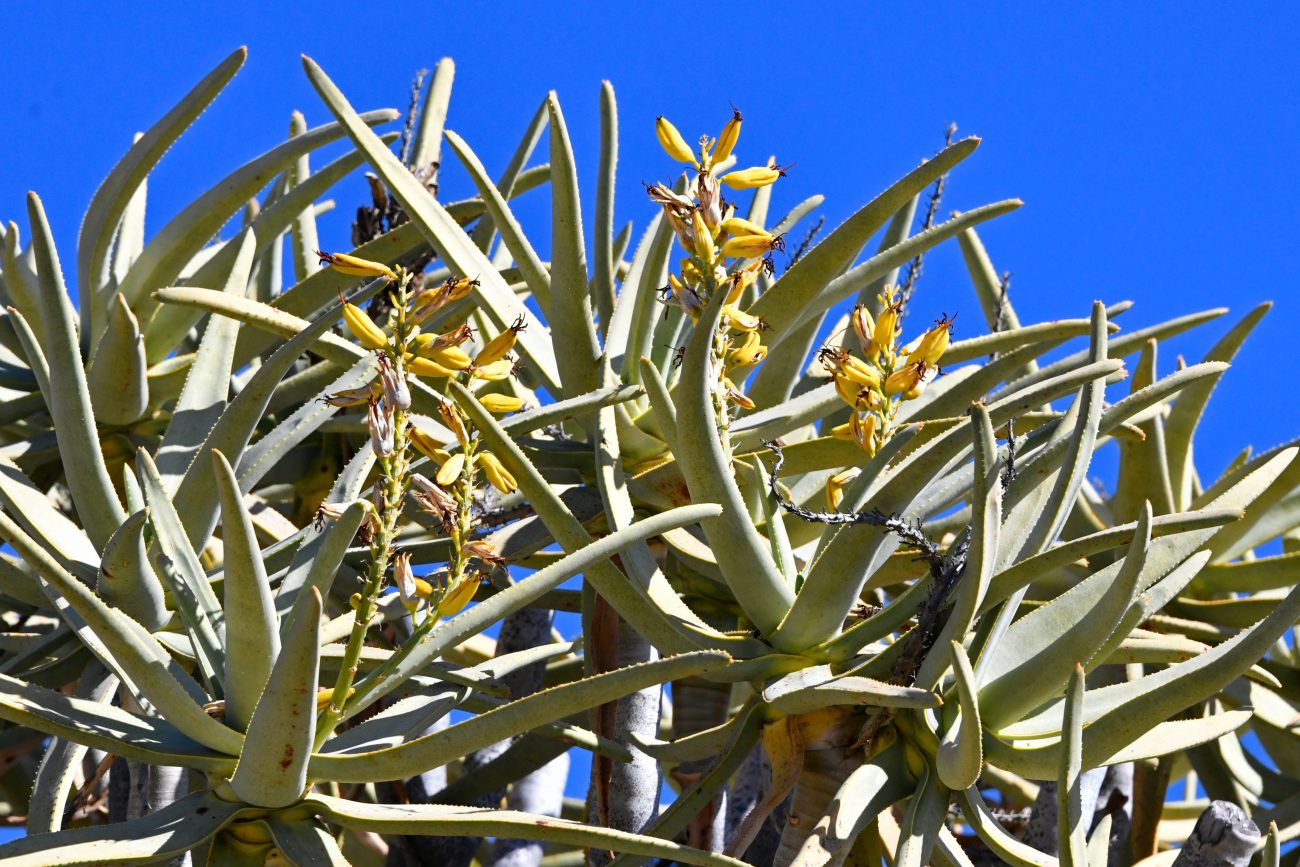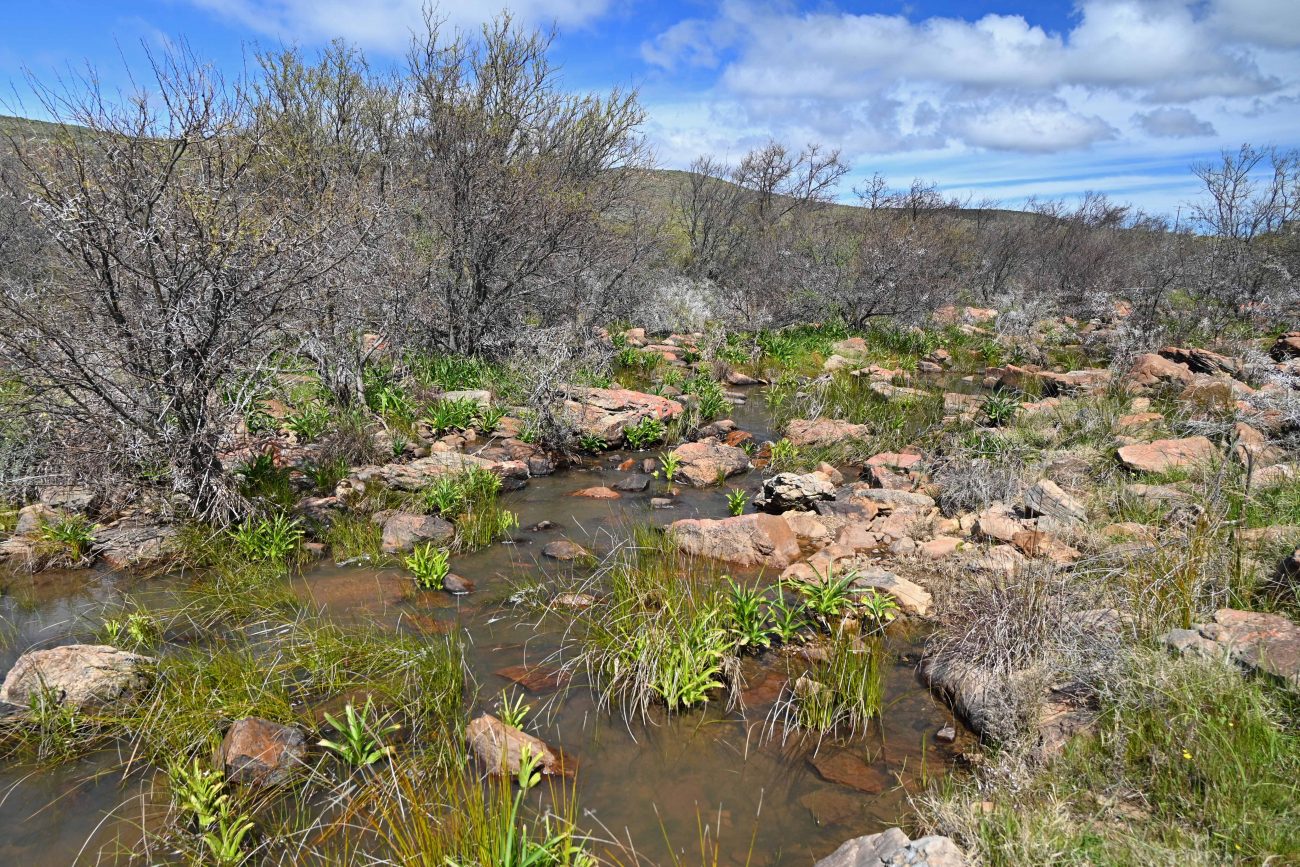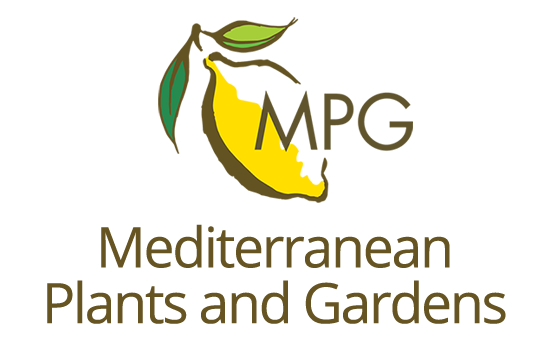Day 8 – Thursday 21 August
Nieuwoudtville to Cederberg Mountains
We spent a second day around Nieuwoudtville, travelling first eastwards down from the plateau to Gannabos and the Quiver Tree Forest, the largest area of Aloidendron dichotomum. It isn’t a tree but a tall succulent, preferring north-facing, rocky, free draining habitats. It has various adaptations to drought including succulent leaves to store water and a white powder on the stems to reflect sunlight. The plant can also cut off water flow into some branches in extreme water stress, regrowing new leaves once conditions improve. Plants produce their first flowers at 15 to 25 years old and can live for 80 to 300 years. The yellow tubular flowers are pollinated by weaver birds, starlings, white-eyes and sunbirds. The common name refers to when the San people hollowed out stems and covered one end with leather to make a quiver for their arrows.
Rain falls on higher ground of the plateau leaving this area drier with Succulent Karoo vegetation. Many of the plants we observed are adapted to the dry conditions. For example, the spiral leaves of Albuca concordinana to reduce exposure to sun and drying winds or succulent Hoodia gordonii with spines (adapted leaves) to minimise surface area.

Quiver Tree Forest

Flowers of Aloidendron dichotomum

Aptosimum procumbens, Karoo Violet

Hoodia gordonii

Codon royenii

Albuca concordinana
Next stop was Nieuwoudtville Waterfall, just north of the town on the Doorn River. In the rainy season water thunders down a 90-metre cascade into a deep pool below. Frank said snakes and other reptiles often bathe on the rock faces here. Another farm track on the way back to town was carpeted with pink Hesperantha pauciflora.

Nieuwoudtville Waterfall

Tylecodon wallichii

Crinum variabile in the River Doorn. The water is brown from tannins from rooibos plants.

Hesperantha pauciflora
In the afternoon we visited the Nieuwoudtville Flower Reserve, exploring between the rocky ‘koppies’. Here we saw long-tongued flies, which are a special feature of pollination systems in Fynbos and Renosterveld vegetation where butterflies are usually scarce. They have proboscis about 40mm long and feed from flowers that have long corolla tubes such as Babiana, Gladiolus and Lapeirousia.

Nieuwoudville Flower Reserve

Babiana framesii, which grows in rock crevices to avoid fires

Long tongued fly

Diascia veronicoides

Veltheimia capensis, in fruit
From here we set off to our next location in the Cederberg Mountains, driving back down along the Bokkeveld escarpment. Frank had one last botanising stop in the Knersvlakte where diminutive Lachenalia trichophylla grew in gritty soil.

View from the Bokkeveld Escarpment across the Knersvlakte

The road up the Bokkeveld escarpment with termite mounds in foreground

Lachenalia trichophylla

